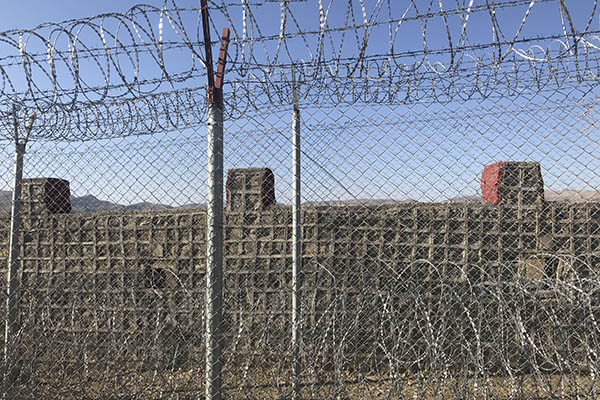
Part of the 2,600km fence along the Pak-Afghan border. Photograph by Nazar Ul Islam
Nothing new, in fact a repetition of the past, for recent talks between Pakistan and Afghanistan to dip into the familiar, mutual villain-making. Kabul has accused Islamabad of getting big dollars from the “rascally” U.S. for letting American drones attack across the Pak-Afghan border although the world vaguely knows that these drones were coming from some isle of the Indian Ocean. Of course the Afghan rep that levelled the charge knew what the reality was but was more focused on replying to Prime Minister Shehbaz Sharif’s recent statement at the U.N. about the terrorist groups crossing the border “hedge” Pakistan is erecting to stop Afghan trespass. And Islamabad’s plaint was that Kabul was not helping in tackling the Tehreek-e-Taliban Pakistan (TTP), crossing the Afghan border and attacking inside Pakistan, with the Pakistan Army losing manpower daily trying to stop them.
The U.N. has taken notice in a report from its secretary-general about “the continuing presence and activities of foreign groups in Afghanistan and its border areas.” Pakistan continues to “respond” to this cross-border activity but remains vulnerable because of the “unmerged” tribal areas where the writ of the state remains weak. Unfortunately, Pakistan cannot dodge the charge of mis-governance in areas like Swat where warlords actually ruled in the not-so-distant past, exercising their tyranny within driving distance of the federal capital. The country has abstained from taking control of its tribal areas, with the unrest propelling mass migration, resulting in Karachi becoming the largest Pakhtun city in the world. Pakistan’s growing security concern is also focused on the re-emergence of Swat tyranny from across the border.
The world probably knows more about what the Afghan rulers in Kabul think than Pakistan pretends to know. It is almost certain that Kabul no longer cares about its attitude towards cross-border and cross-continent terrorism that bothers the world more than it bothers Pakistan. Outfits like Daesh that threaten as far away as America are there, and international warriors like al-Zawahiri can still be “unofficially” hidden in Kabul without the world knowing it. The fact is that Afghanistan is a “failed state” and has survived for decades as one. One major characteristic of the failed state is the replacement of the loyalty previously accorded to an anonymous state apparatus with tribal ethnic or religious groupings. Another aspect of the failed state is what is used by both the mujahideen (1992-1996) and the Taliban (1996-2001) through the appointment of certain people to regional offices with no regard to the state’s designation of institutional obligations on these individuals. Afghanistan was never centralized and depended on regional loyalties negotiated with the central government. The state, thus, began to be present in the big cities while in the countryside it simply did not exist. When the conflict of 1978-79 broke out in the country it was run by a city-based “revolutionary” elite determined to extend the writ of the state to the countryside. Today, the failed state continues to rely on Islam to legitimize its absence of normalcy.
